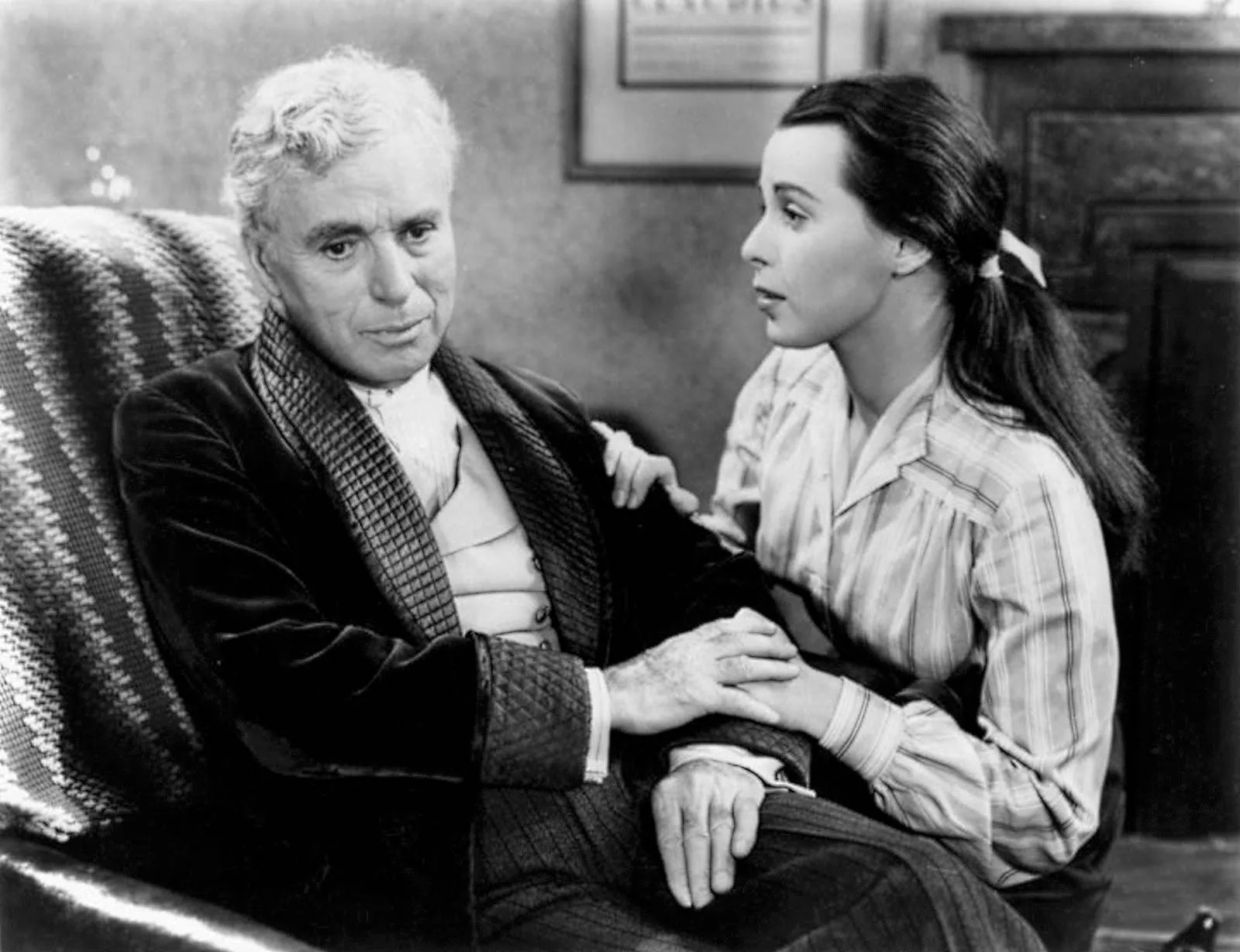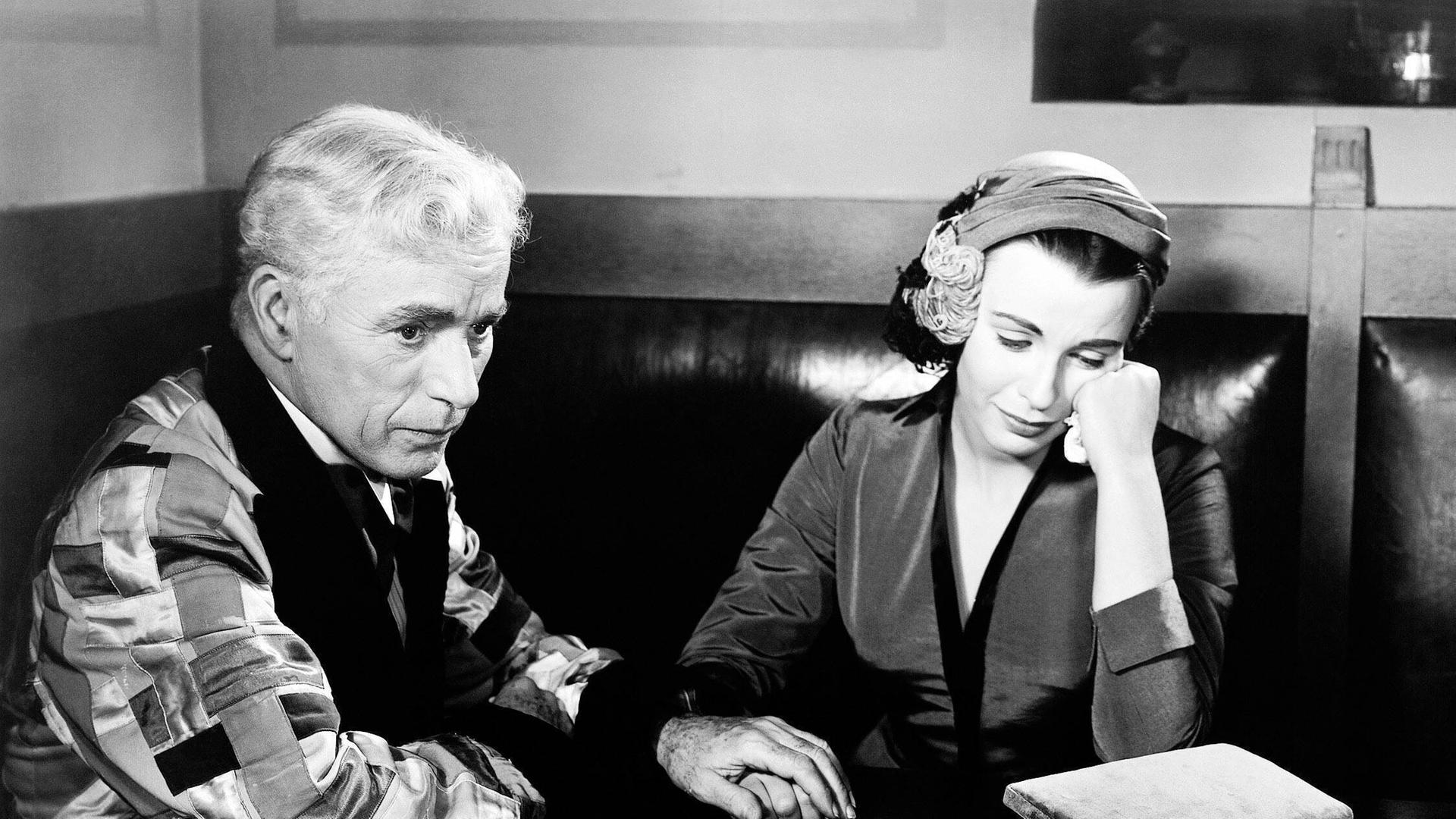I chose this film from among thousands of movies because it holds an essential place for me and Charlie Chaplin in his life. “Limelight” also has an important place in cinema history, as it brings together the two greatest clowns of silent cinema in the same film, which is important to me. Additionally, for Chaplin, the film is important because it marks the end of his American life. Before discussing the film’s impact, I think I need to explain a little about it.
Calvero, played by Charles Chaplin, is a faded vaudevillian artist who longs for the fame he had in the past. He is a lonely and forgotten identity. One day, he smells gas and realizes that his downstairs neighbor Terry(Claire Bloom) is attempting to commit suicide by turning on the gas. Calvero rushes in and saves her. Terry is a ballerina who has lost hope due to her inability to perform her art and has chosen to end her life. Although Calvero has saved her, there is a problem: Terry can no longer walk.

This is where our film begins. With his experience and wisdom, Calvero motivates Terry to stand up because her condition is psychological. With the confidence and strength that Calvero gives her, Terry manages to stand up and even finds a role on the stage that she has been dreaming of, with the motivation she has received from him. She takes the stage and inspires Calvero to return to the stage.
Limelight is perhaps Charlie Chaplin’s most emotional film. In a way, the film tells his own story. Throughout the film, he portrays his declining career. The advent of sound in cinema and the studio system significantly harmed him, and on top of that, he unintentionally became a part of the country’s dark propaganda, which caused him to lose his former fame. In the film, he expresses that his vaudeville life is coming to an end, and that new artists need to be given a chance, but he also confesses his love for the stage.
Another critical aspect of the film, which is very significant for me, is that the two greatest names in silent cinema appeared together in the same film for the first and last time. Buster Keaton, who fared worse than Chaplin with the advent of sound in cinema, and Charlie Chaplin, who persisted in silent cinema but eventually succumbed to sound film, were together in the same film for the first time. For people living in that era, this was a true gift. The sad and interesting part is that these two great comedians had only just met for the first time.
For instance, we can observe the real-life settings of the scenes in the film; Charlie Chaplin belongs to the theater, while Buster Keaton belongs to the cinema. The sad part of the film, and perhaps the only flaw of the film, is that Buster Keaton has a tiny role. We can only see them together in the same frame for just 9 minutes. At the end of the scene where they play together, Calvero falls into the drum, and they take Calvero off the stage. This is a kind of declaration from Chaplin that he would die for the stage. Chaplin, who loved subtexts, was perhaps being critical of himself for the first time. In the film, he portrayed his slow decline and the pains he experienced in his vaudeville life. Another difference from his other films is that he appears not as the character of the Tramp but as a modern gentleman. It is clear that this is his saddest film. He had managed to lift Terry up to the point where she could fly, but he was helpless when it came to helping himself. However, who could have known that the character he created in this film would become a reality for him?

The vital aspect of the film for cinema history is this: Charles Chaplin, who was accused of sympathizing with communism, one of the famous accusations of the time, could never return to America after the film premiered in London. The FBI canceled his entry permit while he was outside of the country. He continued to live abroad until he received the Honorary Award in 1972. Limelight became his last film in America. How sad it is; we can hardly count many people with a successful career and a good ending in the film industry, just like Jean Cocteau, Buster Keaton, or George Melies, considered geniuses of cinema just like Chaplin.
Limelight is also a bit of a musical. The music of the film was composed by Charles Chaplin himself. Although Limelight was released in 1952, it won the best music award in 1973. It’s like America trying to make up for what it did. The same reason is also why they gave him an honorary award. America has sabotaged the career of one of the geniuses of cinema, unfortunately, because of Limelight. Therefore, Limelight is a collection film for me. I occasionally watch it, look at the sadness on Calvero’s face, and wonder if Charlie Chaplin spent the time in Europe with that expression of sorrow. I watch the scene where he and Buster Keaton share the same stage again and again and become extra sad. I think it is Charlie Chaplin’s best film for me and many others because it is indeed his most sincere and meaningful film. He wasn’t acting for the first time; he was literally playing himself.

Cast & Crew
director: Charles Chaplin
writers: Charles Chaplin
starring: Charles Chaplin, Claire Bloom, Buster Keaton
USA | 1952 | 137 MINUTES |
